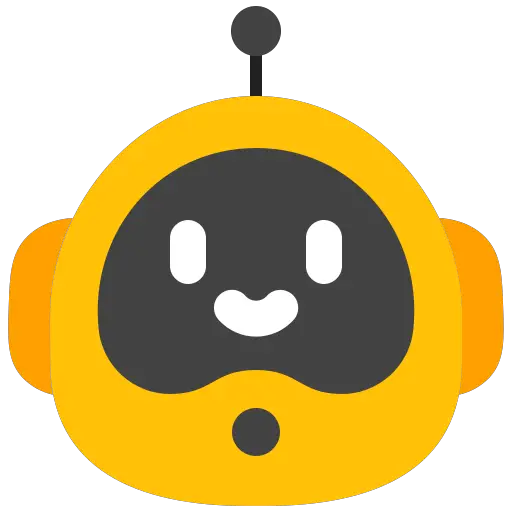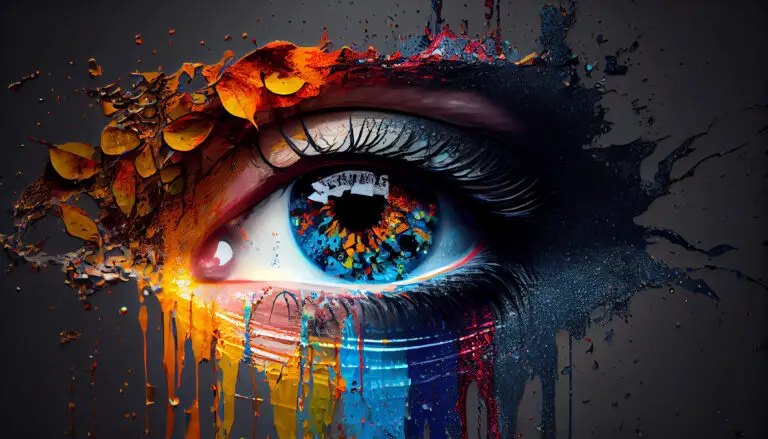How To Write Prompts For Ai Art?
Creating captivating and engaging AI art prompts can be challenging yet rewarding. As the world of artificial intelligence expands, so does the need for unique and innovative ways to generate AI art inspiration.
In this guide, we will explore various techniques for writing AI art prompts, helping you create AI art ideas that spark creativity and push the boundaries of what’s possible with artificial intelligence.
The process of crafting prompts for AI art begins with understanding the capabilities and limitations of artificial intelligence.
By keeping these factors in mind, you can tailor your prompts to suit the needs of an AI artist better. Furthermore, exploring different themes, styles, and subjects can help diversify your artificial intelligence art prompts collection.
Ultimately, generating captivating AI art inspiration requires balancing challenge and feasibility.
With practice and persistence, you’ll soon master writing persuasive prompts that inspire human artists and their AI counterparts.
Understanding AI Art Prompts and Their Importance
AI art prompts are essential for guiding artificial intelligence in creating unique and engaging artwork. These prompts help to define the subject, style, and other elements of the piece that the AI will generate.
By learning how to write effective AI art prompts, you can harness the power of artificial intelligence to create stunning visuals that cater to your specific interests and needs.
The Role of AI Art Prompts
Artificial intelligence art prompts serve as a bridge between human creativity and machine learning capabilities.
They provide direction for the AI system, ensuring that it generates artwork aligned with your vision while allowing room for creative interpretation.
Tips on How to Write Effective AI Art Prompts
To write compelling AI art prompts, it’s crucial to understand what makes them effective in generating desired results.
Here are some tips on crafting prompts that will inspire both you and the artificial intelligence:
- Be clear and concise. Use simple language when writing your prompt so the AI can easily understand your instructions.
- Include relevant details. Specify important elements such as colours, shapes, or themes you want to be incorporated into the artwork.
- Avoid ambiguity. Be precise about what you want and allow creative freedom within those parameters.
- Inspire emotion or evoke a mood. Including emotional cues or moods in your prompt can help guide the overall tone of the generated artwork.
- Create a story or context. Providing a narrative or background information can give depth to your prompt and result in more interesting outcomes for the AI artist.
Finding Inspiration Generate Ideas for Your AI Art Prompts
Coming up with creative and engaging AI art prompts can be challenging.
Here are some ways to generate ideas that will inspire both you and the artificial intelligence:
- Explore existing artwork. Browse galleries, museums, or online platforms to find pieces that resonate with you. Use these as a starting point for your prompts.
- Experiment with different themes. Consider various subjects such as nature, technology, emotions, or abstract concepts when crafting your prompt.
- Mix and match styles. Combine elements from different artistic movements or techniques to create unique combinations for your AI art prompts.
- Collaborate with others. Share ideas and brainstorm with friends or colleagues to develop fresh perspectives on potential prompts.
Crafting Prompts for Different Types of AI Art
Different types of artificial intelligence art require specific approaches when crafting prompts.
Here are some examples of how to tailor your quick writing process based on the type of AI art you want to create:
Digital Painting
In digital painting, focus on describing the desired composition, colour palette, and style. For example, Create a vibrant sunset landscape in an impressionist style.
Generative Design
Parameters like shapes, patterns, or structures are emphasized in generative design projects. For instance, Design a geometric pattern inspired by Islamic architecture.
Narrative Illustration
To create narrative illustrations using AI art tools, provide context through storytelling elements like characters and plotlines. An example could be Illustrated in a scene where two robots meet under a cherry blossom tree.
By understanding the importance of AI art prompts and learning how to write them effectively, you can unlock the full potential of artificial intelligence in creating unique and captivating artwork.
Experiment with different ideas, styles, and themes to generate diverse AI-generated art that reflects your vision and creativity.
- Define clear objectives. When writing prompts for AI art, it is essential to have a well-defined goal in mind. This helps the AI understand your goal and produce relevant artwork.
- Be specific. Detailed descriptions and context can help the AI generate more accurate and visually appealing artwork. Avoid using vague or ambiguous terms when describing your desired outcome.
- Incorporate emotions and themes. Include emotional cues or thematic elements in your prompts to create more engaging and meaningful art. This allows the AI to grasp better the overall mood or message you want to convey through the artwork.
- Experiment with different styles. Encourage creativity by exploring various artistic styles, such as impressionism, surrealism, or abstract expressionism. By specifying a particular style in your prompt, you can guide the AI towards generating unique pieces of art that align with your vision.
- Iterate and refine. As with any creative process, it may take several attempts to achieve the desired result. Don’t be afraid to modify your prompts or provide additional information if the initial output doesn’t meet your expectations. Continuously refining your prompts will help improve the quality of generated artwork over time.
Frequqently Asked Questions
How do I start with writing AI art prompts?
To begin writing AI art prompts, it’s essential to understand the capabilities and limitations of the AI you’re working with.
Start by researching the specific artificial intelligence platform or tool you plan to use for generating your artwork.
Once you have a good understanding, brainstorm ideas that will inspire unique and creative outputs from the AI. Remember to keep your prompts clear, concise, and open-ended enough to allow room for artistic interpretation.
What are some tips for crafting effective prompts for AI art?
When crafting prompts for AI art, consider these tips:
- Be specific. Clearly define what you want the AI to create while leaving room for creativity.
- Use descriptive language. Incorporate adjectives, emotions, or themes to guide AI in generating a particular style or mood.
- Experiment with different formats. Try using questions, statements, or even short narratives as your prompt.
- Combine concepts. Merge two unrelated ideas or subjects to generate unique and unexpected results.
- Iterate and refine. Test multiple variations of your prompt until you achieve desired results.
Can I use existing artwork as inspiration when creating AI art prompts?
Yes! Using existing artworks as inspiration is an excellent way to generate AI art inspiration.
You can reference famous paintings, sculptures, photographs, or any other visual art form in your prompt.
However, be mindful not to infringe on copyrights. Instead of copying an artwork directly, try extracting elements such as colour schemes, composition styles, or subject matter from it and incorporating those into your prompt.
How can I ensure my AI-generated artwork remains original despite using popular themes in my prompts?
To maintain originality while using popular themes in your artificial intelligence art prompts, try combining these themes with unique concepts or ideas.
Experiment with different styles, perspectives, and techniques to create a fresh take on the theme. You can also use AI-generated outputs as a starting point and refine them manually to add your personal touch.
What are some examples of effective AI art prompts?
Effective AI art prompts vary depending on the desired outcome and style.
Some examples include:
- Create an abstract painting inspired by the emotions of joy and serenity.
- Design a futuristic cityscape incorporating elements from both nature and technology.
- Imagine a world where animals have evolved to possess human-like characteristics. Depict this in a whimsical illustration.
- Combine the styles of impressionism and cubism in a portrait of a famous historical figure.
- Visualize the concept of time travels through an intricate, surreal landscape.
Conclusion
In conclusion, crafting prompts for AI art is an exciting and innovative way to explore the limitless potential of artificial intelligence in the realm of creativity.
By learning how to write AI art prompts, we can effectively communicate our ideas and visions to these advanced tools, allowing them to generate awe-inspiring works that push the boundaries of human imagination.
We must approach this process with curiosity and experimentation as we continue to create AI art ideas and generate AI art inspiration.
By doing so, we can discover new ways to merge human ingenuity with artificial intelligence capabilities, creating unique pieces that captivate audiences worldwide.
Ultimately, mastering the art of writing artificial intelligence art prompts will help us better understand these technologies’ creative potential and enable us to harness their power in shaping the future of artistic expression.
So let’s embrace this thrilling journey together as we unlock new possibilities in the ever-evolving world of AI-driven creativity!

